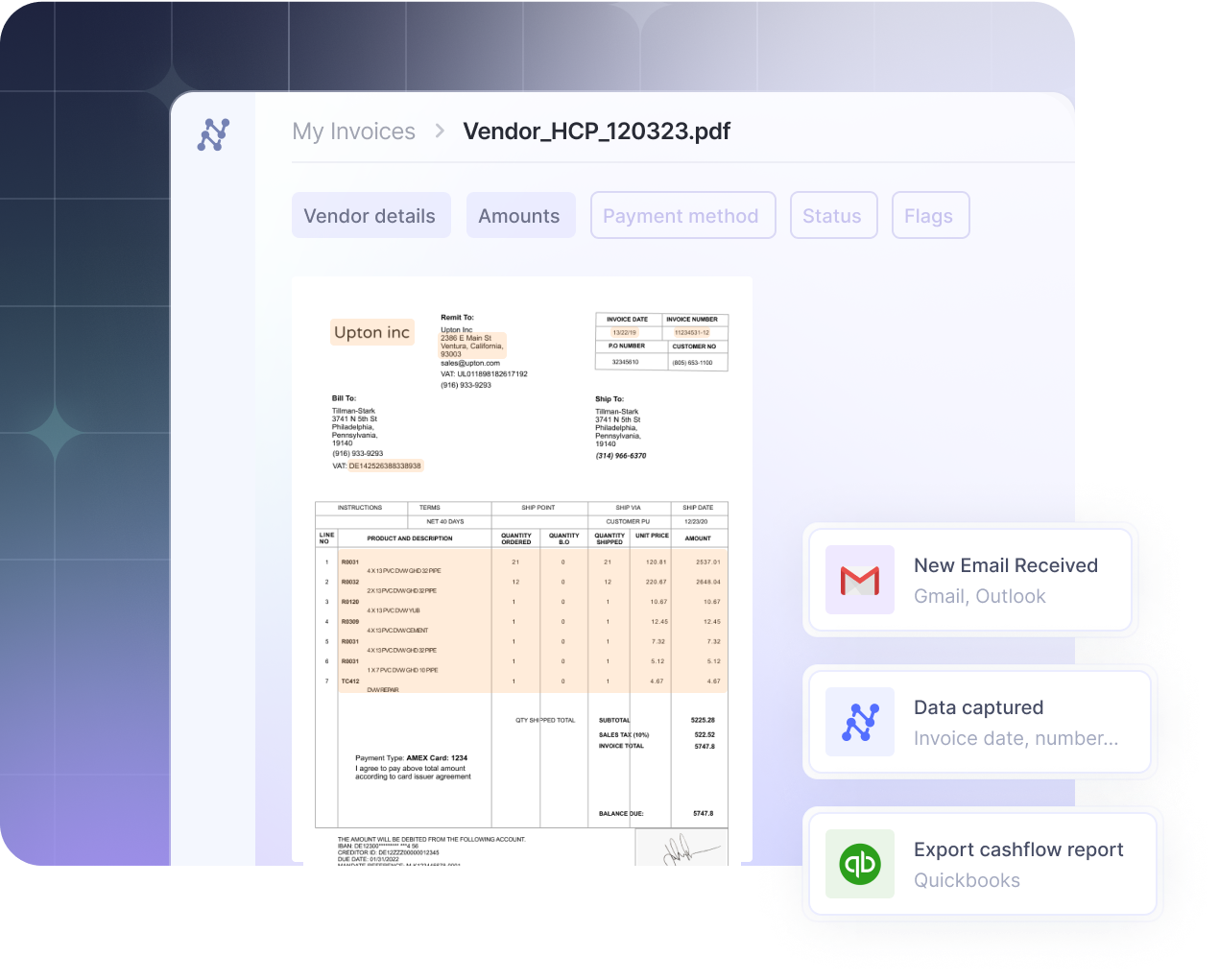Expense reimbursement is a fundamental aspect of business operations, encompassing the process by which employees are paid back for expenses they’ve incurred on behalf of the company. These expenses often include travel, meals, accommodation, and office supplies—costs that are essential for carrying out business activities but are initially borne by employees. The goal of an expense reimbursement process is not just to ensure that employees are compensated in a timely and fair manner but also to maintain accurate financial records and comply with tax laws and regulations.
However, managing this process is fraught with challenges. The landscape of expense reimbursement is intricate, blending financial management with the delicate dynamics of employee satisfaction and organizational trust. Businesses that navigate this terrain successfully understand that at the heart of a robust expense reimbursement process relies on –
- implementing an effective expense policy.
- leveraging the right technology to streamline your expense reimbursement workflow.
- fostering a culture that values transparency, accountability, and continuous improvement.
By ensuring the above steps, businesses can streamline their expense reimbursement workflow and ensure that their operational efficiency is maximized while elevating employee satisfaction.
Let us explore all this in detail.
Understanding the Expense Reimbursement Landscape
Managing expenses isn’t just about keeping the books balanced; it’s a strategic function that directly impacts an organization’s bottom line and operational efficiency. Effective expense reimbursement processes ensure that employees are not out of pocket for company-related expenses, fostering a culture of trust and respect. Moreover, this efficiency can lead to more accurate forecasting and budgeting, as financial leaders have a clearer view of the company’s expenditures in real-time. An optimized reimbursement process also enables companies to leverage tax deductions and credits accurately, ensuring financial health and compliance. In essence, managing expenses effectively is not just about financial transactions but about sustaining a healthy organizational ecosystem.
Common Challenges in Expense Reimbursement
Traditional expense reimbursement systems are often fraught with challenges that can stifle a company’s operational efficiency. Here are common challenges often cited by businesses. Take a quick look and see if your expense reimbursement process might be vulnerable to these. We will discuss how to prevent these fallacies later.
Delays in Reimbursement
- Slow Processing Times
Lengthy approval chains and manual processing lead to significant delays in reimbursing employees.
- Cash Flow Issues
Sometimes, delays are due to cash flow problems within the company, further delaying reimbursement.
Inaccuracies in Expense Reporting
Lack of Transparency
- Unclear Policies
Vague guidelines on what is reimbursable lead to confusion and inconsistent reimbursements.
- Hidden Processes
Employees are often unaware of the status of their reimbursement claims, leading to frustration and mistrust.
Complex and Cumbersome Processes
Employee Dissatisfaction and Morale
- Financial Strain on Employees
Delays and inaccuracies can put a financial burden on employees, affecting their morale and productivity.
- Perceived Unfairness
Inconsistent application of policies can lead to perceptions of unfairness and favoritism.
Regulatory Compliance Risks
Technology and Integration Challenges
- Outdated Systems
Legacy systems that do not integrate well with modern financial software can hinder efficient processing.
- Lack of Mobile Solutions
In today’s digital age, the absence of mobile-friendly solutions for expense submission and tracking can be a significant drawback.
Global and Remote Workforce
- Currency Exchange and International Regulations
Handling expenses in different currencies and adhering to varied international laws complicates the reimbursement process.
- Remote Work Expenses
New categories of expenses arising from remote work arrangements add complexity to policy definitions and reimbursements.
The Impact of Poor Expense Management on Company Culture
The repercussions of an inefficient expense reimbursement process extend beyond financial loss and regulatory penalties; they deeply affect company culture. When employees feel that their financial well-being is compromised by slow or unfair reimbursement practices, it can lead to decreased job satisfaction, lowered morale, and ultimately, a higher turnover rate. The perception of not being valued or fairly compensated for work-related expenditures can create a rift between management and staff, undermining trust and loyalty. Conversely, a transparent, fair, and efficient process can bolster morale, foster a positive work environment, and reinforce the company’s commitment to its employees. In this way, the approach to expense reimbursement becomes a reflection of the company’s values and respect for its workforce.
Implementing an Effective Expense Reimbursement Policy
A well-crafted expense policy serves as a navigational chart, guiding employees through the often murky waters of business spending, while ensuring the company’s financial ship stays on course. Let’s see how to create one.

The role of an expense policy extends beyond mere rules; it’s about setting the tone for how a company handles its finances. A good policy strikes a delicate balance between flexibility and control. It needs to be flexible enough to accommodate the varied needs of a dynamic business environment, yet stringent enough to safeguard the company against unnecessary expenditures and potential fraud.
Key Elements of an Effective Policy
Every effective expense policy should have certain non-negotiable elements:
- Clear Definitions: What constitutes an ‘expense’? This might seem elementary, but ambiguity leads to confusion. Define clearly what employees can and cannot claim as business expenses.
- Spending Limits: Set clear limits. This could vary by role, department, or type of expense. It’s about creating boundaries within which employees can operate autonomously.
- Approval Processes: Establish who authorizes expenses and the workflow for approval. This helps in maintaining a checks and balances system.
- Receipt and Documentation Requirements: Specify the documentation needed to substantiate expenses.
Let’s consider a hypothetical company, “TechWave Solutions,” a mid-sized technology firm specializing in cloud-based services, with around 300 employees. TechWave is experiencing rapid growth and needs to revamp its expense policy to keep up with its evolving needs. Let’s see through how they might go about crafting and exercising their expense policy.
1. Clear Definitions:
- Expense Definition: Expenses at TechWave include any cost incurred for business purposes. This includes
- travel
- client entertainment
- software subscriptions
- office supplies
- Non-Expense Items: Personal expenses, fines for traffic violations while on business trips, or any costs not directly related to business operations.
2. Spending Limits:
- Travel: Limited to $200 per day for accommodation, $50 for meals, and $300 for flight tickets (economy class).
- Client Entertainment: Maximum of $100 per person per event.
- Software Subscriptions: Up to $500 annually per employee for professional development-related subscriptions.
- Office Supplies: Not exceeding $50 per month per employee.
3. Approval Processes:
- Expenses up to $100: Direct manager approval.
- Expenses between $100-$500: Department head approval.
- Expenses over $500: Require CFO approval.
- Approval workflow is integrated into the company’s expense management software for tracking and record-keeping.
4. Receipt and Documentation Requirements:
- All expenses must be accompanied by a receipt.
- For online subscriptions, e-receipts or invoice copies are required.
- Travel expenses require a detailed itinerary.
5. Customization to Business Needs:
- Given TechWave’s focus on technology, a higher budget is allocated for software and online tools.
- Moderate limits reflect the need for some client engagement but also budget control.
6. Transparency and Accessibility:
- The expense policy is published on the company intranet, included in onboarding materials, and integrated into TechWave’s expense management software dashboard.
7. Updating and Evolving Policies:
- Bi-annual reviews to adjust limits and categories as per market rates and company growth.
- With a shift towards remote work, many employees have started working from different locations, leading to a rise in home office setup requests. The HR department reports a 30% increase in remote workers. Employees have requested support for home office setups, including ergonomic chairs and upgraded internet plans, which were not previously covered. This leads to the addition of a new expense category –
- Allocation of up to $500 per employee for a one-time home office setup. This includes ergonomic furniture and necessary technology upgrades.
- An additional $30 per month for enhanced internet plans for remote workers.
- The updated policy is communicated through an all-hands meeting, email newsletters, and updated on the intranet and expense management software.
- The finance team monitors the impact of these changes on the overall expense budget and reports back in the next bi-annual review.
8. Promoting a Culture of Compliance:
- Few discussions in meetings about expense management and compliance.
- Acknowledging and rewarding compliance through internal newsletters and meetings.
9. Monitoring and Feedback:
- TechWave Solutions had been using a basic expense management system. However, as the company grew, the CFO, Alex Morgan, noticed several issues:
- Duplicate Claims: Employees occasionally submitted the same expense twice due to lack of proper tracking.
- Potential Fraud: A few instances of suspicious expenses were flagged but couldn’t be immediately verified.
- Late Payment Fines: Some expenses were being reported too late, leading to missed early payment discounts and incurring late payment fines.
- To address these issues, TechWave Solutions integrated a new feature in their expense management software that provided real-time alerts and analytics. Here’s how it transformed their process:
- Duplicate Claims Prevention: The software now automatically flags duplicate entries. For instance, if an employee tries to submit a hotel bill that matches a previous entry’s date and amount, the system alerts them and the finance team.
- Fraud Detection: Unusual spending patterns trigger alerts. For example, if an employee who rarely travels suddenly submits high travel expenses, the system flags it for review.
- Timely Expense Reporting: The software sends reminders for expense submission deadlines. This helped in reducing late payment fines significantly. For instance, a reminder is sent two days before the end of the month to submit all expenses, ensuring timely processing and payment.
- Quarterly surveys for employees to provide feedback on the expense management process.
- Employees reported that the process of submitting receipts was cumbersome. In response, TechWave upgraded their employee management system to allow easy photo uploads of receipts through a mobile app, greatly speeding up the process and improving compliance.
- The Finance team reported inefficiencies and errors in the manual data entry process of reading receipts and feeding data into the expense software. An OCR integration was added to the expense management software resulting in 90% reduction in corresponding manual work along with data extraction accuracy exceeding 99%.
10. Addressing Non-compliance:
Six months after implementing the new expense policy, TechWave Solutions observes a pattern of non-compliance concerning travel expenses. Several employees have been exceeding the set limit of $200 per day for accommodation during business trips. The finance team reports this trend to the management.
- The CFO initiates a review of recent business trips. The team discovers that in several instances, the only available hotels in the business districts were priced above the company’s set limit, leading to policy violations.
- Management holds discussions with the employees who exceeded the limits. The employees explain that attending meetings in central business areas necessitates staying nearby, but the cost of such accommodations often exceeds the company’s limit.
- The management team, acknowledging the practical challenge, decides to adjust the policy. The new accommodation limit is set to $300 per day in cities with higher living costs, while retaining the $200 limit for other locations.
- This change is communicated to all employees, emphasizing the importance of choosing cost-effective options within the new limits. Tips on early booking, choosing economical hotels, and understanding the new tiered accommodation limits are provided.
- The expense management software is updated to reflect the new limits and to prompt employees for justification when exceeding these limits in specific cities.
Thus, TechWave Solutions’ new evolving expense policy, tailored to its specific business needs and culture, provides a structured and clear framework for managing expenses. This approach not only ensures financial control but also fosters a culture of responsibility and transparency within the organization. Regular updates and feedback mechanisms ensure the policy remains relevant and effective, adapting to the dynamic business environment.
Leveraging Technology for Expense Reimbursement
Technology plays a pivotal role in enhancing the efficiency and accuracy of expense reimbursement processes. By integrating these solutions, companies can overcome many of the common challenges associated with traditional expense management systems. Here are key technologies that can significantly improve the expense reimbursement process:
1. Expense Management Software
Expense management software is the cornerstone of a modern, efficient expense reimbursement system. These platforms offer a comprehensive suite of features designed to simplify every aspect of expense tracking, submission, approval, and reimbursement. Key functionalities include:
- Mobile Accessibility: Employees can submit expenses on-the-go, snapping pictures of receipts directly from their smartphones. This eliminates the need for physical paperwork and accelerates the submission process.
- Real-Time Reporting: Both employees and finance teams gain insights into spending patterns and reimbursement statuses through dashboards and reports. This enhances transparency and aids in budget forecasting.
- Policy Integration: The software can be configured to reflect the organization’s expense policies, automatically flagging submissions that don’t comply. This reduces the burden on finance teams to manually check each claim against company policies.
- International Support: For global organizations, features like currency conversion and compliance with international tax regulations are invaluable. This ensures that the reimbursement process is seamless across different geographies.
We have articulated the best expense management software for streamlined reimbursements and expense approvals. Read the article below.
15 Best Spend Management Software Solutions in 2024
Explore the world of spend management software in 2024. Discover the best solutions and learn how to choose the right one for your business.

2. Optical Character Recognition (OCR)
OCR technology has transformed how receipts and invoices are processed. By extracting text from images and digital documents, OCR enables:
- Automated Data Entry: Reducing manual errors and saving significant time, as the relevant information from receipts is automatically populated into the expense management system.
- Enhanced Verification: OCR helps in verifying the authenticity of receipts and cross-checking them against submitted claims, improving the accuracy of reimbursements.
- Digital Record Keeping: With OCR, digital copies of receipts can be stored efficiently, making it easier to retrieve documents for audits or compliance checks.
Top 10 Best Invoice Processing Automation Software in 2024
There are many invoice processing software options available today. We’ve picked and reviewed the top 10 invoice automation software.

3. Workflow Automation
Workflow automation streamlines the approval process, ensuring that expense claims move swiftly from submission to reimbursement. Automation can:
- Customize Approval Flows: Based on the type of expense, amount, or department, the software automatically routes claims to the appropriate approvers, eliminating bottlenecks.
- Alerts and Notifications: Automated reminders keep all stakeholders informed about pending actions, due dates, and policy violations, ensuring nothing falls through the cracks.
- Integration with Accounting Systems: Automating the transfer of approved expenses into the accounting ledger speeds up the reimbursement cycle and reduces administrative overhead.
Best 10 Workflow Automation Software in 2024
Explore the top 10 workflow automation software in 2024, delving into their features and pricing strategies in this comprehensive guide.

4. Reconciliation Tools
Reconciliation is crucial for maintaining accurate financial records and ensuring compliance. Advanced reconciliation tools offer:
- Matching Transactions: Automatically matching credit card transactions with submitted expense claims, highlighting discrepancies for further investigation.
- Audit Trails: Creating comprehensive logs of all actions taken on each expense claim, supporting transparency and accountability.
- Analytics: Identifying trends in expense claims, such as frequent policy violations or unusual spending patterns, which can inform policy updates or targeted training.
5 Best Reconciliation Software in 2024
Explore the best software reconciliation tools of 2024. Streamline financial accuracy and integrity with these cutting-edge solutions.

By integrating these technologies into their expense reimbursement workflow, organizations can create a more dynamic, efficient, and user-friendly expense reimbursement process. This not only reduces the administrative burden on finance teams but also enhances the overall employee experience, contributing to a more positive corporate culture.
Optimizing the Expense Reimbursement Process
Now, let’s understand how to create and implement a streamlined expense reimbursement process for your business.
Step 1: Have your Expense Policy in Place
- Create a detailed policy document outlining eligible expenses, spending limits, documentation requirements, and approval procedures. We discussed how to create an effective expense policy tailored to the nuances of your business in a previous section.
- Ensure your expense policy is easily accessible to all employees. Publish it on your company’s intranet, include it in onboarding packages, or integrate it into your expense management system to ensure it’s readily available.
Step 2: Leverage Technology to Automate the Reimbursement Workflow
The manual implementation of an expense reimbursement workflow involves a series of steps handled by employees, managers, and the finance team without the aid of dedicated software. This process, while more traditional, can be time-consuming and prone to human error but is still in use, especially by smaller organizations with fewer transactions.
Free Expense Report Template | Nanonets
Use the free expense report template to create professional expense reports for your company.

- Expense Submission: Employees incur expenses and keep physical receipts. They then fill out an expense report form, often a spreadsheet or paper form, detailing each expense, the amount, and the business purpose.
- Manager Review: The employee submits their completed expense report and attached receipts to their manager for review. The manager checks each expense against the company’s policy to ensure compliance.
- Finance Verification: Once approved by the manager, the expense report is forwarded to the finance department. The finance team conducts a final review to verify the accuracy of the report and compliance with the policy, checking receipts and calculations manually.
- Reimbursement: If the expense report is approved, the finance team processes the reimbursement, which may involve cutting a check or processing a bank transfer to the employee. This step can take several days or weeks, depending on the payment cycle.
- Record-Keeping: Finance stores the expense reports and receipts for auditing purposes. This often involves filing paper copies in cabinets or scanning them into a basic digital storage system.
An automated workflow leverages technology to streamline and enhance the efficiency of implementing your expense policy. This approach reduces manual errors, speeds up the reimbursement process, and provides real-time visibility into spending patterns.
Let’s see how the manual workflow is transformed and automated by using Nanonets Expense Management Software.
- Digital Expense Submission: Employees use an app or web-based platform to submit expenses. They can take photos of receipts with their smartphones or directly upload their expense documents in any format, and the software automatically extracts relevant details using OCR (Optical Character Recognition) technology. Expenses are categorized using AI and employees can also add any necessary notes about the business purpose directly in the app.

- Automated Policy Compliance Checks: The expense management software automatically checks each submission against the company’s expense policy. It flags any violations in real-time, prompting the employee to correct the issue or add a note for exceptional circumstances.

- Manager Approval: Managers receive notifications of pending expense reports through the platform. They can review, approve, or reject expenses with a click, and can also see any policy violations flagged by the system.

- Finance Oversight and Reimbursement Processing: Approved expenses are automatically forwarded to the finance team. The software integrates with accounting systems, allowing for direct processing of reimbursements through payroll or bank transfers. Finance retains oversight and can audit expenses in real-time or through periodic reports.

- Digital Record-Keeping and Analytics: The system stores all expense data digitally, eliminating physical storage needs. Finance teams can access detailed reports and analytics, enabling better budgeting, forecasting, and identification of spending trends or areas of non-compliance.

Here are a few cases studies of businesses that have successfully streamlined their expense reimbursement processes using technology –
- SaltPay Uses Nanonets to Integrate with SAP to Manage Vendor Invoices.
- In2 Project Management helps Water Supply Corporation save 700,000 AUD with Nanonets AI.
- How Happy Jewellers, a SMB, benefitted from NanoNets.
- Nanonets AI helps ACM Services automate extraction from expense documents, saving 90% time for the Accounts Payable team.
- Tapi automates property maintenance invoices using Nanonets.
- Puma automates their expense management process with Zoho Expense.
- SWISS improved expense processing efficiency by 80% with Rydoo.
- Suncommon manages their company spend and saves company time by leveraging the the Expensify Card.
Step 3: Speeding Up the Reimbursement Cycle
1. Schedule Regular Reimbursement Cycles: Establish a regular schedule for reimbursements (e.g., bi-weekly, monthly) and stick to it. This predictability helps employees manage their personal finances better and reduces anxiety around waiting for reimbursements.
2. Offer Direct Deposit: Use direct deposit to reimburse employees, eliminating the need for physical checks and speeding up the process. Ensure that the finance team processes reimbursements promptly once approvals are in place.
3. Leverage Fast Payment Technologies: Explore the use of instant payment technologies that can facilitate quicker transfers of funds. This can be particularly beneficial for organizations with a large remote or international workforce.
4. Monitor and Analyze Reimbursement Times: Regularly review how long the reimbursement process takes and identify any bottlenecks. Use this data to continually refine and speed up the process.
Step 4: Auditing and Compliance Monitoring
1. Conduct Regular Audits: Schedule regular, random audits of reimbursed expenses to ensure compliance with the company policy and detect any patterns of fraud or non-compliance. Use a mix of manual checks and software tools that can flag anomalies.
2. Implement Spot Checks: In addition to scheduled audits, conduct unscheduled spot checks. This keeps employees and approvers diligent, knowing that any expense can be reviewed at any time.
3. Implement a Whistleblower Policy: Establish a confidential and anonymous reporting mechanism for employees to report suspected fraud or policy violations without fear of retaliation.
4. Use Data Analytics: Leverage data analytics tools within your expense management software to monitor compliance trends, identify outliers, and spot potential issues before they become systemic problems.
4. Foster a Culture of Integrity: Make it clear that the company values integrity and compliance in all aspects of its operations. This can be reinforced through regular training sessions and communications from leadership.
In optimizing the workflow for expense reimbursement, the goal is to create a process that is not only efficient and compliant but also user-friendly and transparent. By implementing these strategies, companies can ensure that their expense reimbursement process supports both operational efficiency and employee satisfaction, ultimately contributing to a healthier organizational culture.
Other Best Practices
To optimize your expense reimbursement process, consider these essential practices:
1. Foster a Culture of Responsibility and Accountability
While policies and technologies form the backbone of an expense reimbursement system, the ultimate success of the process hinges on the behavior and ethics of the individuals within the organization. Encourage a culture where employees understand the significance of responsible spending and accurate reporting. This involves regular training sessions, clear communication of the implications of non-compliance, and a system that easily allows for the reporting of discrepancies or suggestions for improvement.
2. Embrace Continuous Improvement
The business environment and associated expenses evolve continuously; thus, your expense reimbursement process should too. Implement a regular review cycle for your policies and technologies to ensure they remain relevant and efficient. Solicit feedback from users of the system—both employees submitting expenses and the finance team processing them—to identify pain points and opportunities for enhancement.
3. Ensure Seamless Integration with Other Business Systems
Expense reimbursement doesn’t operate in isolation. It’s part of a larger ecosystem of business processes and systems, including accounting software, HR systems, and project management tools. Seamless integration between these systems not only streamlines workflow but also ensures accuracy and consistency across the board. When selecting technology solutions, prioritize those that offer robust integration capabilities.
4. Leverage Data for Strategic Insights
An often-overlooked aspect of the expense reimbursement process is its potential to provide strategic business insights. Through comprehensive data analysis, finance leaders can uncover trends in spending, identify areas where cost savings are possible, and make informed decisions about budget allocations. Ensure your system supports detailed reporting and analytics.
5. Prioritize User Experience in Technology Selection
The effectiveness of any technology solution depends on its adoption by users. When selecting expense management software or other technological tools, prioritize solutions that offer an intuitive user interface and a positive user experience. This includes features such as mobile accessibility, easy receipt uploading, and straightforward expense reporting functionalities.
6. Implement Proactive Fraud Detection Measures
While trust is a critical component of a positive organizational culture, it’s also essential to have systems in place that proactively detect and prevent fraudulent expense claims. Advanced expense management solutions incorporate features like duplicate detection, unusual activity alerts, and AI-driven pattern recognition to help safeguard against fraud.
7. Develop a Comprehensive Onboarding and Continuous Education Program
New employees should be thoroughly educated on the expense reimbursement process as part of their onboarding. Additionally, continuous education initiatives should be implemented to keep all employees updated on any changes to the policies or systems. This could include regular training sessions, newsletters, or even short, informative videos.
8. Streamline the Approval Process
Identify bottlenecks in the approval chain and streamline the process to ensure timely reimbursement. This might involve setting clear thresholds for different levels of approval or implementing a tiered approval process based on the expense amount or type. The goal is to balance control with efficiency, ensuring that expenses are reviewed and approved promptly.
Conclusion
Streamlining the expense reimbursement process is crucial for maintaining operational efficiency, ensuring financial compliance, and fostering employee satisfaction within any organization. By implementing a clear and effective expense policy, leveraging advanced technology, and cultivating a culture of transparency and accountability, businesses can overcome the common challenges associated with expense management. These steps not only expedite the reimbursement process but also enhance the accuracy of financial records, mitigate the risk of fraudulent claims, and improve overall organizational trust.



